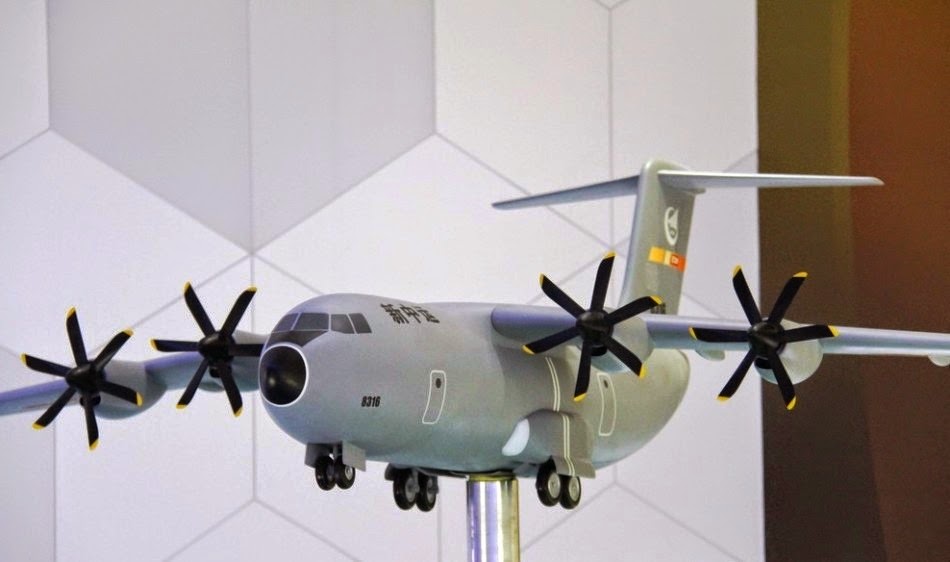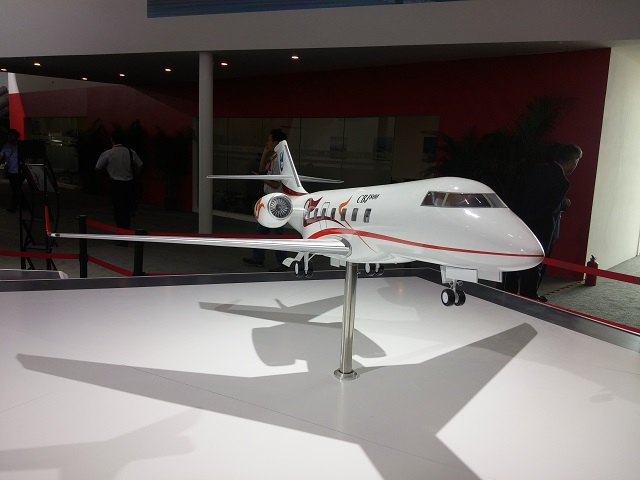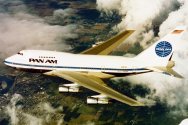In that case it seems PLAAF/PLANAF are stuck with Y9 variants until the end of time.COMAC have strict rules since the beginning. stay away from military industrial complex. teamed up with western suppliers to access the parts/components. learn from them and cultivate civil aviation industry in the mainland. they have been successful so far.
this is one the main reasons why AECC has established in 2016. COMAC have decision making power in AECC.. talking about CJ engine series.
You are using an out of date browser. It may not display this or other websites correctly.
You should upgrade or use an alternative browser.
You should upgrade or use an alternative browser.
COMAC C919
- Thread starter Deino
- Start date
we are going off topic but..In that case it seems PLAAF/PLANAF are stuck with Y9 variants until the end of time.
Shaanxi Aircraft is ready to replace Y-9 series with Four turboprop powered Y-30 aircraft. all depend on PLAAF need and their decision.
Y-30 research and development has completed. they are waiting for green signal.
%2BChinese%2BY-30%2BMedium%2BTurboprop%2BMilitary%2BTransport%2BAircraft.jpg)
another strong rumor. PLAAF might go with twin engines powered Y-20 variant in near future for other missions as you mentioned above like AEW , ASW and EW due to operating cost.
for VVIP and business jet, AVIC launched CBJ-800 project.

My guess is they are waiting for development of the AEP-500 engine to be complete. Once that engine is available it will be used in the Xian MA700 and later in the Y-30.Y-30 research and development has completed. they are waiting for green signal.
Twin engine Y-20 makes sense if they manage to get the CJ-2000 engine in production. But I do not see the Y-20 being used for ASW and EW. It is just too large.another strong rumor. PLAAF might go with twin engines powered Y-20 variant in near future for other missions as you mentioned above like AEW , ASW and EW due to operating cost.
They could attemp developing a Gulfstream G550-equivalent from the CBJ-800.for VVIP and business jet, AVIC launched CBJ-800 project.

But just as mentioned, a new clean-sheet design from Xi'an or Shaanxi instead of AVIC will be needed.
In the meantime, China's KJ-600 is already well underway with evaluation and verification test flights. Being largely similar in size, will we see KJ-600 and a G550-equivalent being present in the PLAAF at the same time, given how their positions and roles are likely to clash with each another?
The KJ-600 is also a much closer-to-service product, too.
Last edited:
lcloo
Major
They can redesign the Y20 air frame by shortening it as in Boeing 747SP. A shortened Y20 with reduced weight can be powered by just 2 engines.My guess is they are waiting for development of the AEP-500 engine to be complete. Once that engine is available it will be used in the Xian MA700 and later in the Y-30.
Twin engine Y-20 makes sense if they manage to get the CJ-2000 engine in production. But I do not see the Y-20 being used for ASW and EW. It is just too large.
Boeing 747SP

its insane that people dont realize how important C919 is to China's industry. that it is simply not worth it to risk this project for some marginal benefit of military use. it only makes sense for C919 to be converted for military use after China has produced hundreds of them, and has already begun production of C929.In that case it seems PLAAF/PLANAF are stuck with Y9 variants until the end of time.
I believe the 100% Chinese C919 will happen eventually. Already the CJ-1000 engine is in flight tests. So there is a roadmap for increasing localization.
The same thing will happen as it did with the high speed rail where China started with licensed local production of trains, then switched to their own designs, and eventually came up with the Fuxing lineup which is now being widely exported.
The same thing will happen as it did with the high speed rail where China started with licensed local production of trains, then switched to their own designs, and eventually came up with the Fuxing lineup which is now being widely exported.
TBH, instead of trying to force a rapid and complete indigenization of the COMAC C919 in order to fit the needs of the PLA - China could in fact contract Xi'an (or Shaanxi/jointly with Shaanxi) to develop clean-sheet a jetliner that is purpose-built for PLAAF and PLANAF usage from the onset, with little to no relations with the COMAC C919 - With covert support from COMAC whenever necessary, of course.
Japan's Kawasaki P-1 maritime patrol aircraft (MPA) is the classic example of this route.
View attachment 119679
In this regard, China can certainly follow Japan's methodology in developing jetliners which appear in the form of civilian commercial jetliners, but with military standards for purely military needs by the PLA. Also, unlike the C919, such jetliner will be free from the various constrains that comes with commercial jetliners, particularly in terms of cost, efficiency and reliability.
Speaking of engines alone, China already has the WS-20 and AEP1300, both of which are suitable for A320 and 737-sized aircrafts (of which the P-1 being also in the same category).
In fact, the Xi'an Y-20 (especially the B variant onwards) large airlifter is already as indigenous as it is. So, if China really does need military-grade jetliners like the Kawasaki P-1, AVIC can certainly develop one, especially since they already have the experience and knowhow of developing large-sized aircrafts through the Y-20 project.
Needless to say, though, unlike the P-1 which has been developed by Kawasaki as MPA from the get-go - AVIC can develop said military-grade jetliner to be a universal platform for multiple uses, i.e. AEW&C, EW and ECM, ELINT and SIGINT, ASW, executive transport, and AACP.
Perhaps it's time to revive the Y-10 project... But the questions are: Is it necessary? And is it worth it?
Similarly, you are also viewing this whole thing back to front.
The whole reason why a domestic, commercially competitive C919 is attractive as a special mission military platform in the future is because the military variants would have an extensive domestic and commercially competitive C919 fleet and logistics and support network to draw from, helping to reduce operating costs significantly.
Pursuing a bespoke jet powered military airframe that is only viable for military purposes and insufficiently competitive to have a variant for commercial uses (either for commercial airliners or for business jets) means that you are basically doing R&D and maintaining operating costs for an entire fleet of aircraft on your own dime. Unless said new clean sheet military airframe can also be used for transport roles (in which case it's more likely that a transport airframe would be the baseline airframe for new special mission derivatives rather than vice versa), it makes no sense to pursue what you're suggesting.
The only way the above would make sense is if the PLA urgently needed a special mission airframe and they had no other options -- but they currently already have the Y-9 airframe which they use for many military roles fairly successfully, and while the Y-9 airframe is not "perfect" it can certainly do most of the jobs pretty darn well until a domestic and commercially competitive C919 variant is ready.
The Kawasaki P-1 is not a good example of a sensible project and if anything it is a project whose developmental pathway should be avoided.
I think everyone is trying too hard to come up with circumstances and situations where either a "sanction proof" C919 can be made, or in your case a "jet powered military airframe before C919" makes sense.
But neither of those currently make sense.
Really at this stage, the most pragmatic option is straight forward and boring and doesn't require that much brainpower for us:
1. Develop a domestic and commercially competitive C919 variant
2. Develop a military variant of the above once it is ready
At present there aren't any incentives for them to seriously pursue options for either a "sanction proof" (but non-competitive) C919 variant, or to pursue a clean sheet jet powered military airframe.
In that case it seems PLAAF/PLANAF are stuck with Y9 variants until the end of time.
A fully domesticated C919 would absolutely be viable for PLA roles; while COMAC currently is not touching military roles, that makes sense when they are dependent on substantial western inputs for current production.
Once they have up and running domestic alternatives, it is virtually guaranteed that they'll have military variants.
Until then, yes they'll continue using Y-9 variants for many of their special mission roles, which is perfectly fine because the airframe is mature, well supported and can do quite a number of roles fairly well.
If it takes 10 or 15 or more years for the first domestic commercially competitive C919 to be utilized as a military variant (I would be surprised if it takes that long), that's perfectly fine.
COMAC have strict rules since the beginning. stay away from military industrial complex. teamed up with western suppliers to access the parts/components. learn from them and cultivate civil aviation industry in the mainland. they have been successful so far.
this is one the main reasons why AECC has established in 2016. COMAC have decision making power in AECC.. talking about CJ engine series.
It is a very smart strategy. This allowed a dual-track approach to advancing and broadening the industrial base. Domestic leads in the military sector while international collaboration and standards leads for civilian aircraft.
There are weaknesses in both domestic (less leading edge) and international (risk of sanctions) but having both alleviate risk in either. There is no doubt that the advancement and practices at Airbus Tianjin bleeds into the rest of the industry while the domestic engines provides a backup in case of sanctions.
COMAC is doing what the rest of Chinese industries have done. First establish yourself as a legitimate OEM with a mix of domestic & foreign suppliers and then you sub out foreign supply chain over time. I would think propulsion is the only major hurdle right now. Everything else seems easier in comparison
and keep in mind that the market is huge, Airbus will be building 144 NEOs in China a year and they always have trouble with supply chain not being able to keep up. They'd gladly sub in Chinese suppliers for Tianjin production if these suppliers prove themselves with C919 first
and keep in mind that the market is huge, Airbus will be building 144 NEOs in China a year and they always have trouble with supply chain not being able to keep up. They'd gladly sub in Chinese suppliers for Tianjin production if these suppliers prove themselves with C919 first
